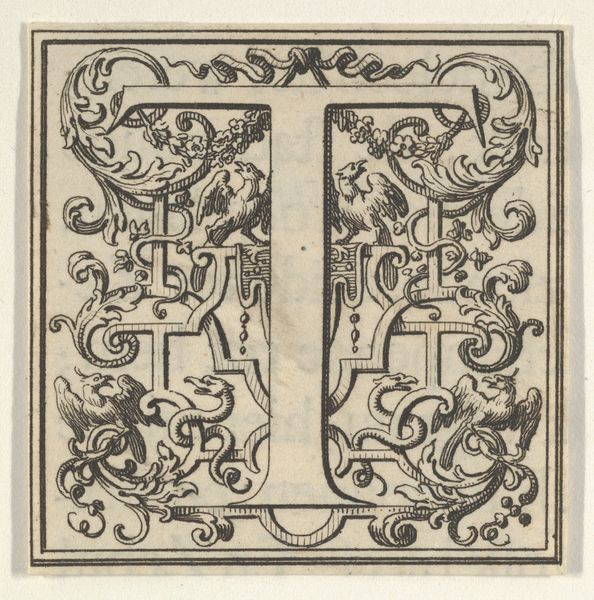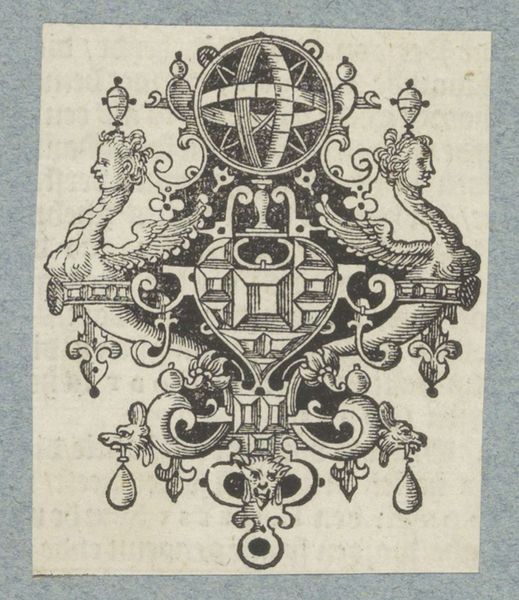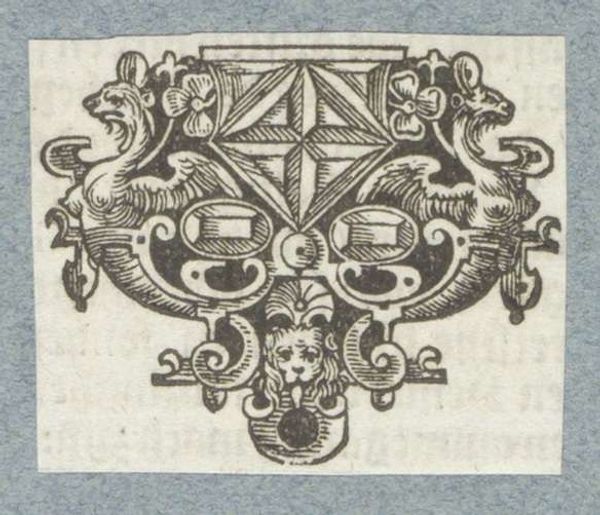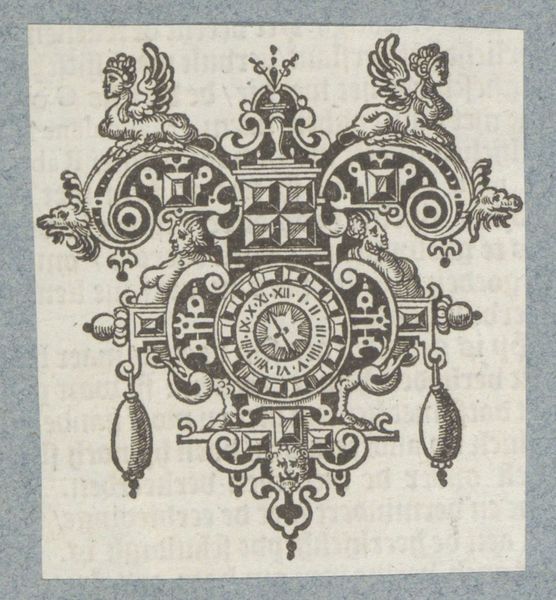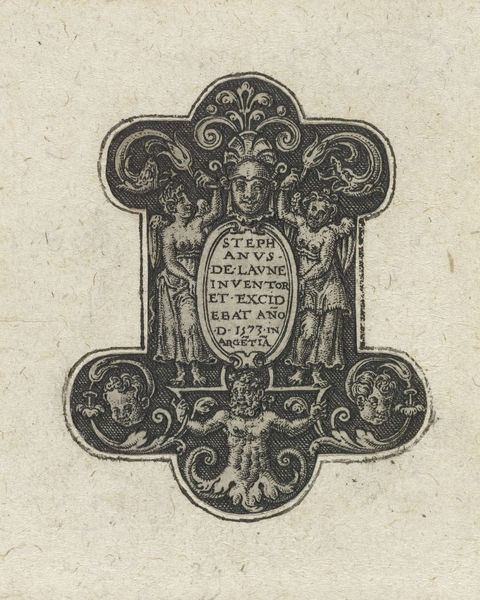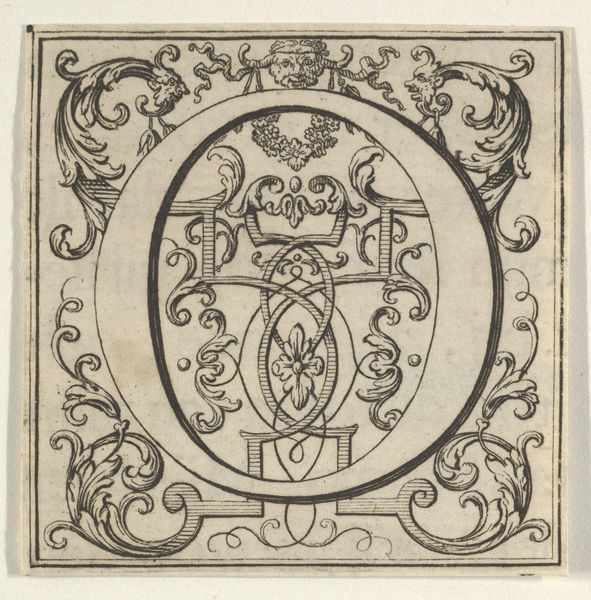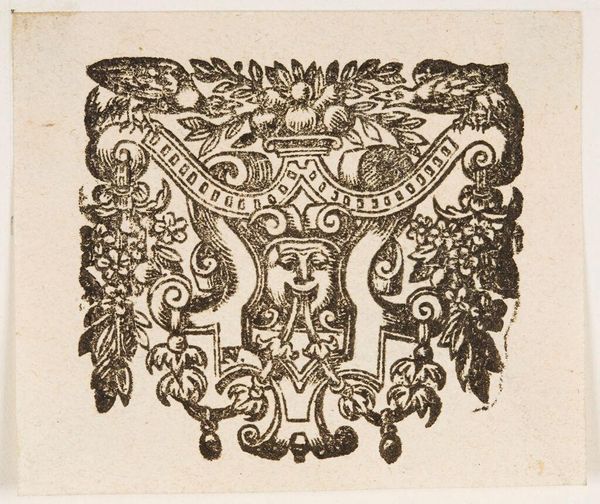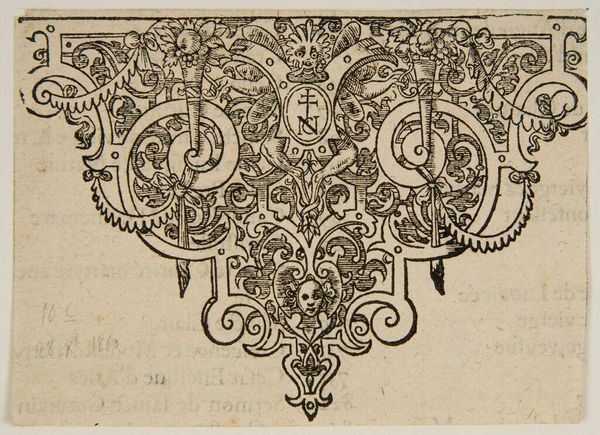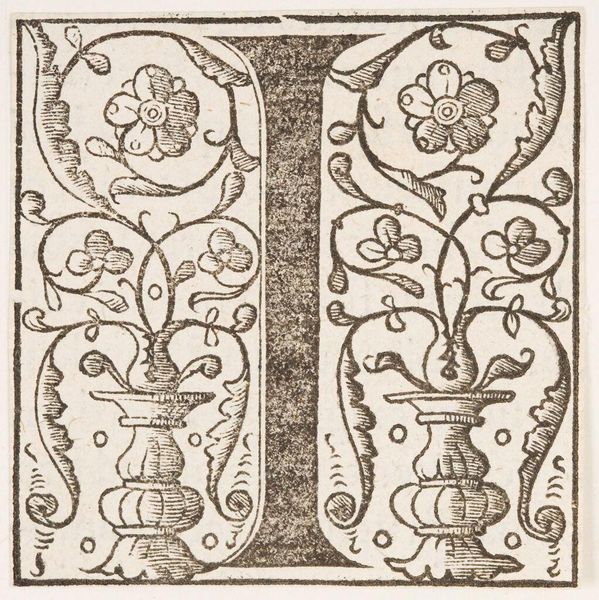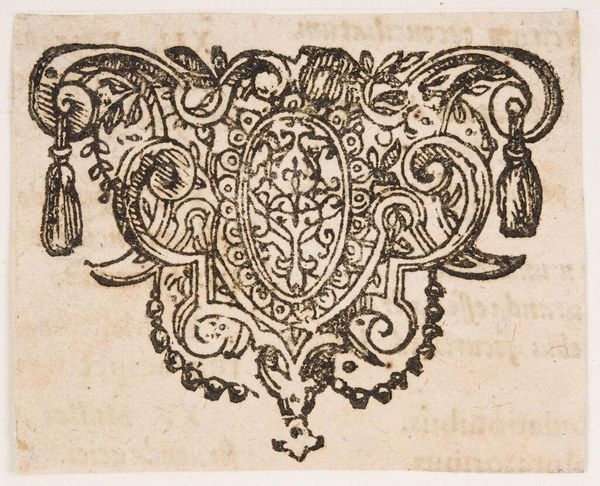
drawing, graphic-art, ornament, print, engraving
#
drawing
#
graphic-art
#
ornament
#
baroque
#
pen drawing
# print
#
book
#
old engraving style
#
engraving
Dimensions: height 68 mm, width 66 mm
Copyright: Rijks Museum: Open Domain
Curator: This is a drawing entitled "Ornament met edelstenen" housed here at the Rijksmuseum. The artwork is by Christoffel van Sichem II and is believed to have been created sometime between 1597 and 1667. Editor: My immediate impression is one of controlled chaos. So much detail, fighting for space within the confines of the frame. The composition is visually busy, demanding close inspection. Curator: Precisely. The engraving and pen drawing medium lend themselves well to the dense layering of imagery. It showcases a distinct Baroque aesthetic through ornamentation. The emphasis appears to be more on surface elaboration than depth. Editor: I find the repeated motifs compelling. We see mirrored figures flanking central emblems. Dragons, perhaps, suggesting a heraldic function? What would something like this be *for* during that period? Curator: Ornament prints such as this one were often compiled in model books and then used in luxury good productions like for arms, jewelry or furniture. Disseminating trends and tastes throughout workshops. The political subtext might subtly reinforce notions of wealth. Editor: Notice the use of concentric circles, squares, and jewels themselves as formal elements. This repetition structures the image, which reinforces a stable composition when viewed longer. Semiotically, each object serves as signifier contributing the whole aesthetic system. Curator: Looking closely, one also perceives an early version of branding: each component works toward cultivating symbolic significance related to status. Editor: So this engraving transcends mere aesthetics, reflecting broader social currents. A testament to the material aspirations that helped define its epoch? Curator: Absolutely, and how these forms themselves carry so much cultural weight that would affect how one consumed visual artistry and the objects they could inspire at the time. Editor: Studying details here unveils layers of art historical nuance about craftsmanship. What a potent lens for interpreting this period! Curator: Agreed. Analyzing this complex piece invites further inquiry to understand better 17th-century social conditions.
Comments
No comments
Be the first to comment and join the conversation on the ultimate creative platform.
